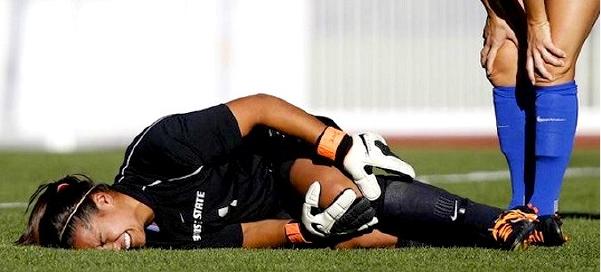It’s not all doom and gloom after undergoing an ACL reconstruction. There are many factors that help dictate success as an athlete attempts to return to sport. Studies show that a good subset can get back to their pre-injury levels and go on to compete at the highest levels. We can increase the likelihood of this happening by ensuring that the rehabilitation process includes a checklist of important factors.
These insightful works and this entire blog were guest written by trusted colleague Ziad Dahdul, PT, DPT, OCS. I appreciate sharing his expertise- do heed his exceptional advice!
Ziad is an orthopedic physical therapist practicing at C.O.R.E. Physical Therapy in Fullerton, CA. He graduated from the University of Southern California with a doctorate in physical therapy. Ziad works with high level collegiate and high school athletes in addition to helping clients rehabilitate conditions across the lifespan. He became an orthopedic clinical specialist (OCS) in 2014 and utilizes an evidence-based approach to treating his clients.
Website: ziaddahdul.wordpress.com
Anterior Cruciate Ligament (ACL) tears are fast becoming one of the most common athletic injuries seen across all sports.
While soccer and basketball may have higher ACL injury rates than others, the overall rate is reaching epidemic levels. With changes in surgical approaches and developing better rehabilitative interventions, we have slowly begun to see improved outcomes. BUT, this is a journey that needs to be effectively managed not only by the athlete, but also his or her family and medical professionals.
Adolescent athletes are highly susceptible to ACL injuries. Numerous studies have shown that it occurs in ~15% of elite amateur athletes. Girls are anywhere from 2-8 times more likely to sustain this injury than boys. Considering how rapidly adolescents grow and change, it’s easy to see why we have an problem on our hands.
Once the injury itself occurs, we can’t go back in time and change the outcome. What’s done is done. But what we can do is ask ourselves one very important question:
How can we prevent this from happening AGAIN?
Here are some very crucial considerations for all involved parties as the road to recovery is planned and laid out
Waiting more than 9 months prior to returning to sport SIGNIFICANTLY reduces the risk of re-injury
- When combing through the research, it’s difficult to find anything close to consensus when researching practically anything. However, one slowly growing trend that many appear to agree upon is waiting at least nine months before returning to sport. From a healing standpoint, returning to sport prior to optimal healing time not only increases re-injury risk, but also increases likelihood of injury to the other leg. Also, movement patterns need to be re-taught and the young athlete has to be physically AND mentally ready to return to sport demands.
- Waiting 9 months doesn’t provide guarantees, but it does reduce re-injury by allowing more optimal ACL graft acceptance/healing. That time frame also provides appropriate time for skilled and guided rehabilitation.
(picture courtesy of truesportsphysicaltherapy.com)
The better the quality of care during the rehab process, the better the outcome
- This seems like a straightforward point, but young athletes need to be strategically, systematically, and progressively taken through a guided rehabilitation protocol. Running, cutting, and jumping need to be re-taught and supervised in order to assure more optimal function. This means that milestones need to be achieved, goals need to be tracked and attained, and the athlete needs to be compliant. It’s very difficult to expect compliance if rehab professionals (physical therapist, athletic training, strength and conditioning coach, etc) don’t require accountability.
Time is not the only barometer when determining return to sport
- More and more evidence is showing that waiting > 9 months, receiving a detailing orthopaedic surgical assessment, and passing a battery of functional/strength tests reduces the risk of a second ACL injury. Although we typically see athletes cleared to return after a certain amount of time, we’re slowly finding that this should only be a small piece of the decision-making process. Time alone doesn’t predict success when returning to sport. Making time a consideration as part of an overall assessment of function, we can hopefully increase post-operative success.
More symmetry = Better outcomes
- One final, but important, measure that your rehab professional should assess is limb symmetry. This looks at how similar the injured side is to the uninjured side. Measurements include things like strength, stability with hopping/cutting, and the distance one can jump. The closer to 100% the two limbs are, the less the likelihood of re-injury. While the general rule of thumb is getting the injured side within at least 90% of the un-injured side, any properly designed rehab program should shoot for a goal of 100%. Regardless of the goal, we won’t know where the athlete stands if it’s not being tracked. Having a physical therapist that values these research-backed measures is vital and should really be the standard of care.



